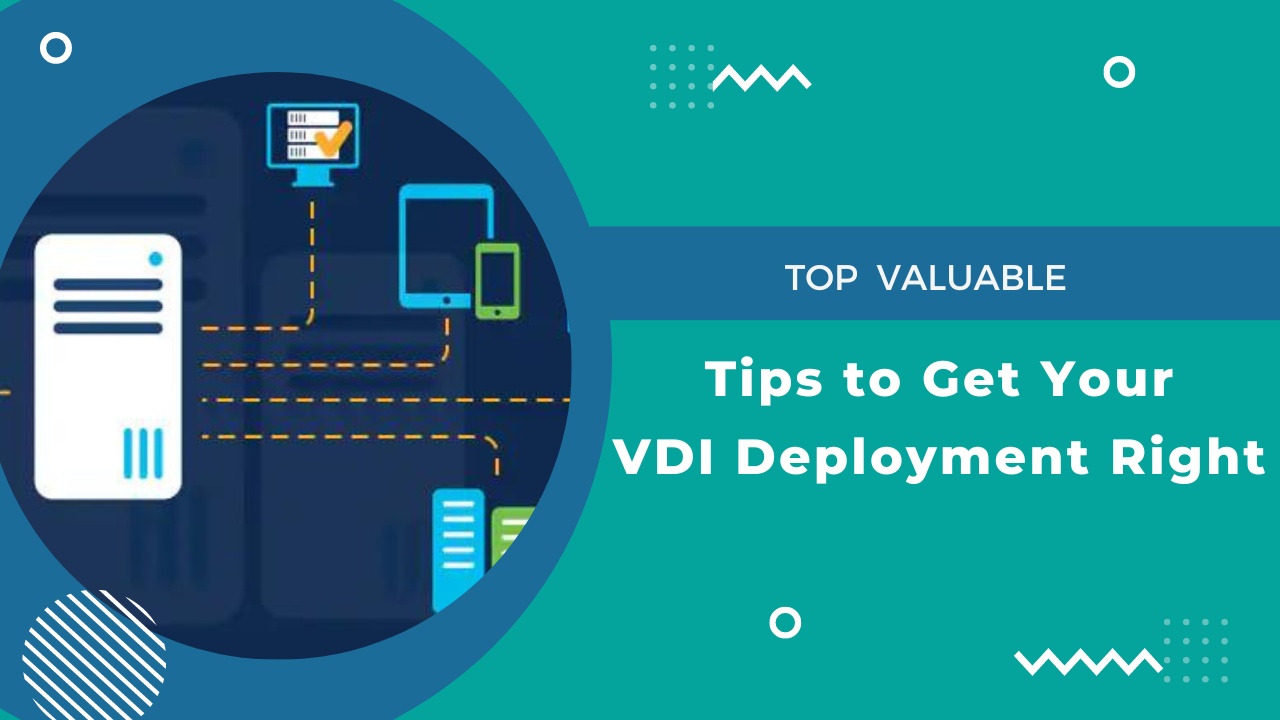A VDI (Virtual Desktop Infrastructure) is the next best after the Public Cloud. There are so many deployment scenarios in which the unique circumstances of an enterprise do not allow the use of the public cloud, irrespective of how cost-effective and convenient that may be. On the other side of the spectrum is a vastly distributed architecture wherein data is spread sporadically across hundreds or even thousands of end devices in a complex manner. In this model, there are so many administrative & infrastructure management challenges.
For a start, heavy investment has to be made in the endpoint devices because you want them to have the best specifications to perform the best. Secondly, you require vast numbers of IT professionals having a wide range of skills so that you can manage this dispersed infrastructure well. Finally, one of the most significant challenge here is data security. As the data is distributed across so many devices, it is impossible to secure every endpoint device completely. There is also the administrative challenge of patching & updating so many devices working remotely.
How Does VDI Work?
Before going into the characteristics of a well-planned & deployed Virtual Desktop Infrastructure (VDI), let’s briefly find out how this deployment model works. VDI, or private cloud as it is called, is a centralized deployment model for storing, computing, and processing. In VDI, one creates virtual desktops over an exclusive data center maintained on-premise, along with supportive hardware. These virtual desktops (VDs) end users will log into their devices on a secure, dedicated network.
End users or employees can use various devices like smartphones, tablets, laptops, or desktops to log into their VDI. Each user will have a unique login credential to log into the VD. Login into such a VD network is usually a two-tier process in which the employee will first connect with the company’s network and then login. All the work end-users will do over their respective VDs will be stored safely in the centralized data center instead of the endpoint devices on which they work.
Tips for VDI deployment
Now that we are familiar with the VDI, let’s discuss some key points to consider when going in for a VDI deployment.
Forecast user requirements
This is an essential component of the VDI planning phase. While doing this, each entity must determine its current storage, computing, and processing needs and assess future requirements. The possibility of supporting applications and how they would get combined with the VDI is key to success.
Network design
One of the reasons why people select VDI is exclusivity. But one thing should be kept in mind; it should not come at the price of the performance because we don’t want sub-par performance in this. Therefore, the VDI environment’s performance will hinge on effective & robust network design in terms of security & performance.
Storage forecasting
While planning VDI deployment, all the storage needs of the party will have to be met in-house, and it must be done at a centralized data center. It is important to thoughtfully plan the current & future storage needs of the entity. Apart from size, the storage type is also a key factor.
Ready to experience the full power of cloud technology?
Our cloud experts will speed up cloud deployment, and make your business more efficient.
Persistent or non-Persistent VDs
This depends much on the requirements of the deploying entity. In the persistent VDs, the individual preferences of every end user are saved, maintained, and served upon the next login. No doubt that this greatly enhances the user experience, but it adds to the cost and complexity of the solution.
VDI login platforms
This decision will influence the VDI solution’s cost and the end-user experience. Every entity will have to decide the devices that the VDs would support. But keep in mind as you expand the range of supported devices and OS platforms, the VDI solution will become more complex. Another point to consider is whether to support the Bring Your Own Device (BYOD) model or install low-specification systems on-premise, called thin clients. If you decide to go with thin clients, it will bring a certain degree of uniformity to your VDI deployment, but it will also result in additional costs.
VDIs availability
This aspect of the VDI must also be handled with proper planning and forecasting. The organization’s performance will heavily depend on the availability of VDs in even the most challenging situations. Therefore, there has to be full VDI uptime, at least for the critical processes.
Though a VDI solution may have higher costs, it has the potential to fulfill the computing and processing needs of even large organizations. But then, a VDI deployment will require careful and thoughtful planning, which considers an enterprise’s existing and future needs. ISmile Technologies transforms & empowers your workforce with secure & efficient VDI solutions. Our VD-managed services solve the complexity of deploying & managing VDs in the public cloud delivered as the ‘VDI as a service’ platform. Schedule your free assessment today.








